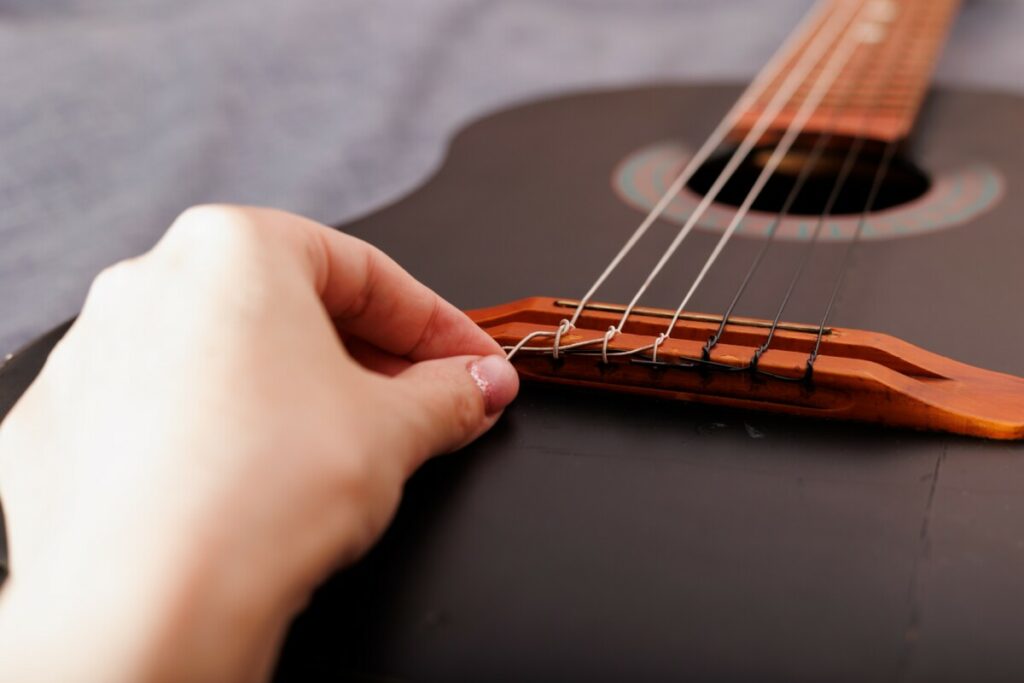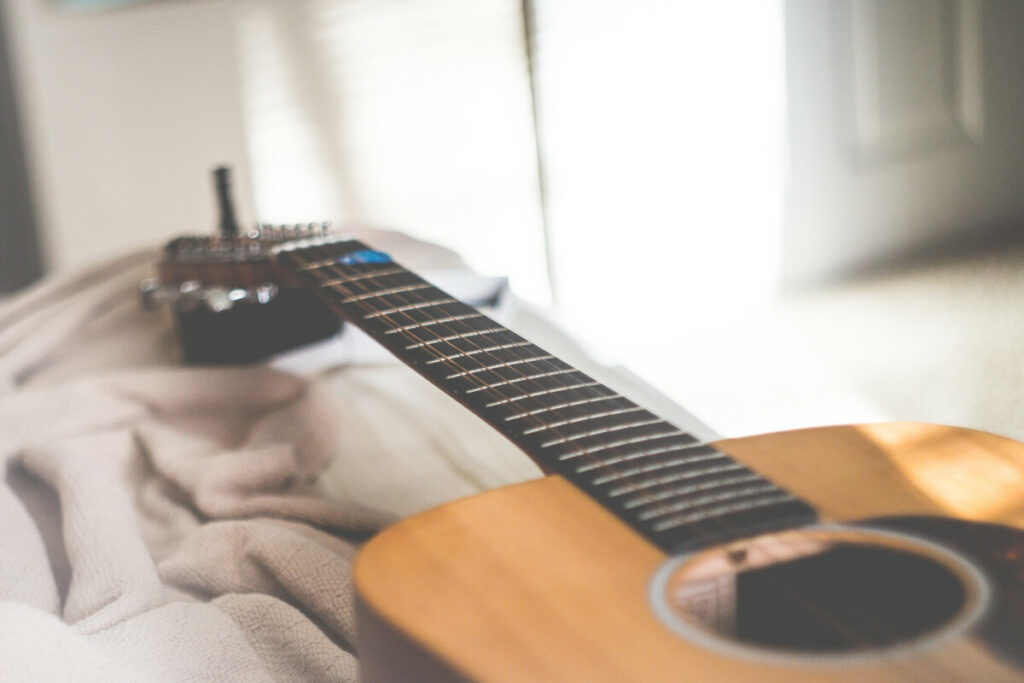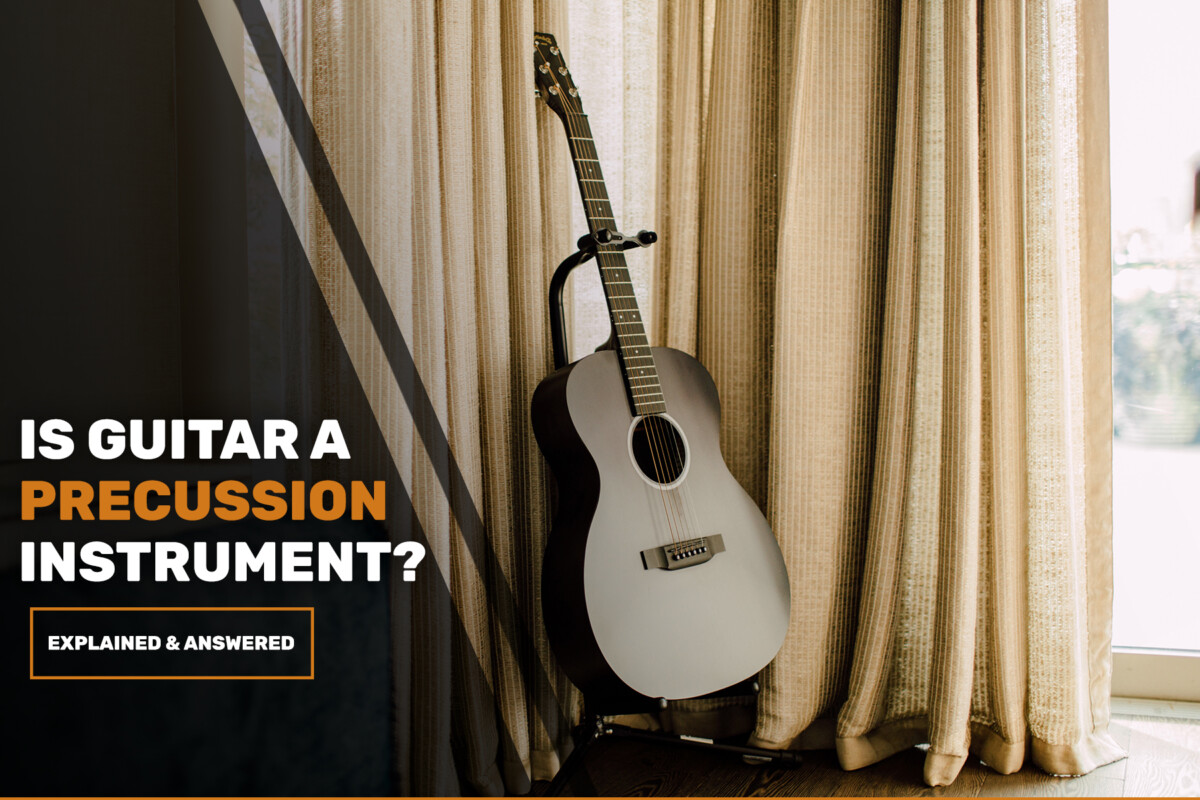Percussion, keyboard, woodwind, and string are some examples of different kinds of musical instruments that produce sounds in their own unique ways.
So you might be wondering which category the guitar falls into. Is it only a string instrument or it could be a percussion instrument as well? In this article, we provide answers to these questions so continue reading.
Key Takeaways
- The guitar is a string instrument but can be used as a percussion one as well.
- Guitars are made of wood as vibration-conductive material and strings are able to create sound through these vibrations.
- Guitar can be used as a percussion instrument by tapping the body of the guitar.
- If you loosen the guitar strings you get deeper sounds and a percussion effect.
- Tapping the body of an acoustic guitar closer to the soundhole will create a deeper sound.
- You could hit or mute the strings to create a percussion sound.
Table of Contents
Is the guitar a percussion instrument?

The guitar is not a percussion instrument, but rather a string one. This is because the sound is produced by means of vibrating strings which is done by strumming or plucking the strings.
This is the guitar’s main purpose, but nonetheless, it can be also used as a percussion instrument because you can produce a percussive sound by muted tones or tapping the body of the guitar with your palm or fingers.
So even though a guitar can be used as a percussion instrument, it is designed and mostly used for melodies, unlike drums, for example, which are specifically made for creating percussive sounds. But the difference between the two here would be that drums cannot be used melodically at all.
Guitar as a string instrument
A guitar is considered a string musical instrument because it is designed and built to be able to convey vibrations, not percussion.
No matter what kind, the guitars are always made of wood. They consist of a wooden body, neck, and headstock with strings attached along the neck. Because of the way guitars are built, the vibrations of the strings made by strumming can really be highlighted with the help of the conductive qualities of the wooden body.
In acoustic guitars, there is a hollow chamber as part of the wooden body which helps with vibration and amplifies the acoustics in the sound. On the other hand, electric guitars rely on electronic pick-ups and an amplifier.
In general, the strings of the guitar allow you to create melodies and harmonies through tones in different pitches, while the percussion instruments rely on timing.
Guitar as a percussion instrument
Percussion instruments are instruments that produce sound by percussion-tapping or striking. As we already mentioned some stringed instruments can also be used with percussion.
The guitar can be used as a percussion instrument by tapping the body with your palm or fingers to create sounds. There are a few famous solo guitar players who have used this method in their playing styles such as Andy McKee and Antonie Dufour.
Most guitar players use the guitar as a stringed instrument to create melodies, rather than percussion, but if you are experienced and want to experiment more with your playing style you could incorporate percussion in the melody to create a beat and interesting sounds.
How can I use the guitar as a percussion instrument?

As we already mentioned, you can use the guitar as a percussion instrument by tapping the body with your palm, but there are also other ways that you can achieve this. In the following paragraphs, we go through more options for using the guitar as a percussion instrument.
Loosen/Tighten strings to get a percussion effect
To be able to use your guitar as both a string and percussion instrument you could tune it differently. You could loosen and tighten your strings for different pitches to be able to get more of a percussion effect.
If you loosen your guitar strings, for example, you will get deeper sounds which are the perfect ground for percussion. This is because when the strings are wound loose the vibrations travel slower, hence a deeper sound.
Tapping the body of the guitar
You could get a great effect and sound similar to drums by tapping the body of the guitar. This is especially easy to do with an acoustic guitar because of its shape. With your free hand, you can tap the body of the guitar for a percussion effect.
Tapping the body of an acoustic guitar to create percussion sounds is simple to do because you can free your strumming hand while the strings continue their vibration you can play the notes with your other hand and use your free one to tap the body.
Besides using your palm for tapping you could also use your fingers or even your knuckles. When it comes to how deep the produced sound will be with this technique, you should remember that if you are tapping closer to the soundhole it will be a deeper sound.
Hitting the guitar strings
Another thing you could do to produce percussion sounds is to hit the guitar strings. Many guitars do this for melodic sounds, but it can also produce percussion sounds. If you want a more intense percussion sound you should slap the strings harder against the neck of the guitar (the fretboard).
If you slap the guitar strings with your palm in a repeated motion you can achieve this percussion sound. This method is mostly incorporated between chord changes or generally made to go along with the tempo of the song.
Muting the guitar strings
To create a percussion sound you could also use the method of muting the guitar strings. This can be done by using any free finger from the hand placed on the fretboard, even the thumb, to mute the strings when you put it on them.
When you are strumming chords with your other hand and the strings are muted, you will be able to create a percussion sound. But of course, the string stretching and tuning have to be previously well done.
Final thoughts
Even though the guitar is mainly a string instrument using its strings and wooden body to create melodic sounds, it can be also used in some ways to create percussion sounds. This can be achieved through different tuning, body, strings tapping, and string muting.
Keep in mind that these percussion sounds are only an effect that can be produced, but not a complete replacement for other percussion instruments if you need them to play a certain song. But after all, knowing these techniques can be an addition to your guitar-playing style.

